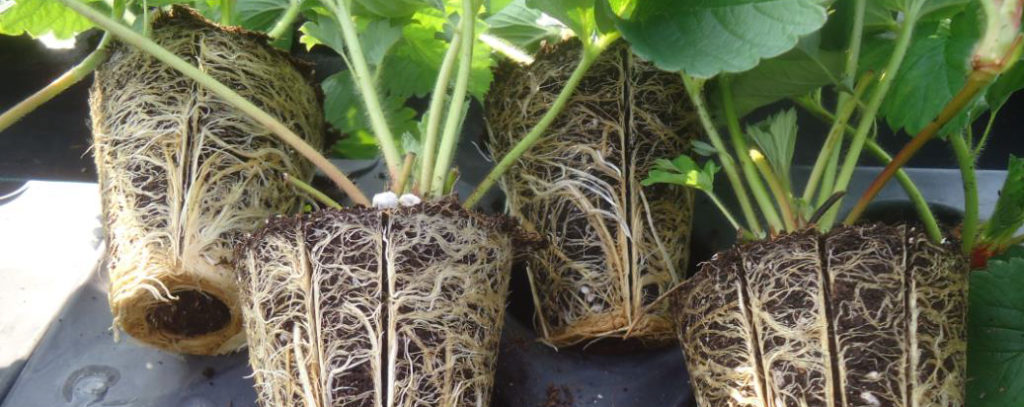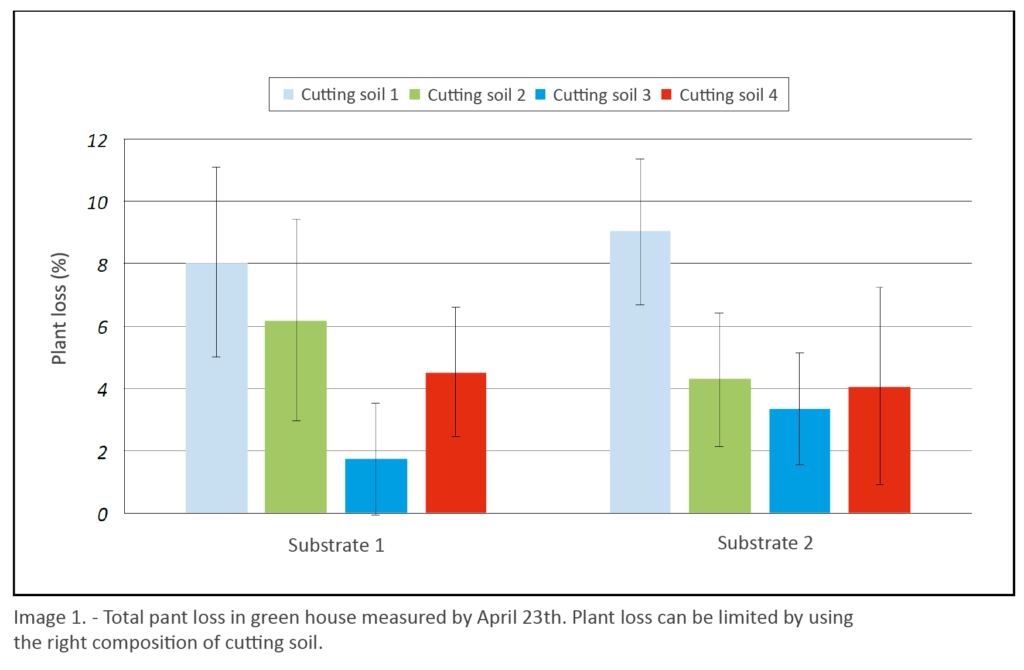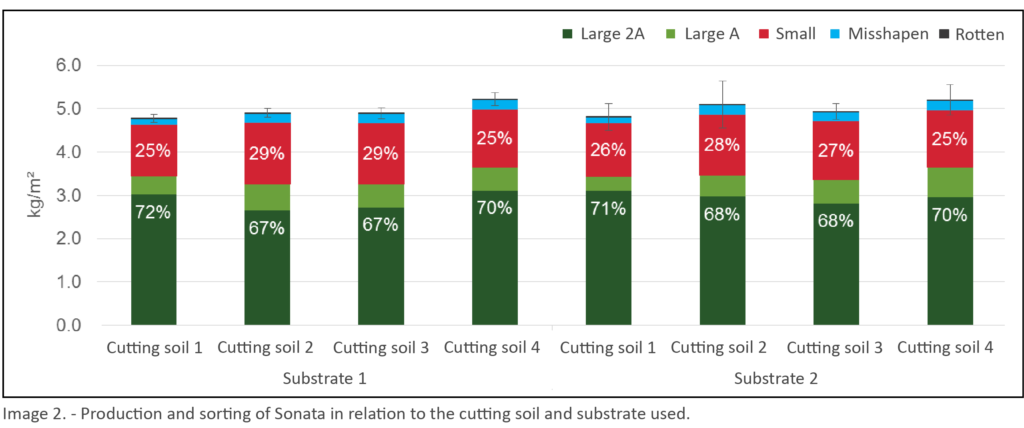In this article, mr. P. Melis from the test center shares what the results of tests with different substrates are and we explain about using the right substrate to fight phytophthora.

Strawberry growers in The Netherlands and Belgium struggle with plant diseases that cause problems with the roots of the plants. These fungal diseases are caused by Phytopthora fungi. The government recently banned the use of most of the important fungicides. This causes quite some issues for growers.
Growers righteously fear the growing risks of infections at tray fields. A fungus called Phytophthora cactorum remains invisible in the propagation phase, but can cause serious harm once the plants get bigger and are moved into greenhouses to grow fruits.
Varieties used
In addition, our most important varieties; Elsanta and Sonata are very sensitive to this root fungus. The Hoogstraten Test Center and BVB Substrates therefore joined forces and started a test project on the influence the soil mixtures used can have on the plant’s capability to fight Phytophthora in July 2018. Sonata was the variety we used in our tests. By opting for better draining and airier substrates with better draining capabilities, the “swimming” spores of Phytophthora have fewer opportunities to cause infections.
| Peat | Coco | Other | |
| Mixture 1 | 20% fr. 0 block peat 40% sphagnum (finely ground) |
20% | 20% black peat |
| Mixture 2 | 35% fr. 0 block peat 35% sphagnum (finely ground) |
25% | 10% perlite |
| Mixture 3 | 50% BVB Accretio | 50% | – |
| Mixture 4 | 20% fr. 0 block peat 40% sphagnum (finely ground) |
20% | 20% wood fibre |
Choice of substrate also based on sustainability
Substrates growers typically use for growing cuttings on tray fields are based on peat and coconut. For these tests we used four types of cutting soil (Table above). A traditional mixture of peat with 20% coconut and 20% block peat was chosen as the mixture used in the control group (cutting soil 1). By increasing the amount of coconut, water management improved in the other cuttings. The addition of perlite (mixture 2) or wood fiber (mixture 4) provides a more airy root environment and a quicker drain. In addition we tested a new mixture with 50% BVB Accretio (mixture 3). Accretio, made from Sphagnum, comes from the top 10 cm of peat fields. Just as with wood fiber, the use of this material improves sustainability. The upper layer of peat fields can be harvested within rather short periods, compared to the thousands of years required for the deeper peat layers.
Composition of substrate determines speed of rooting
On the test field, the first differences were already apparent after one month. The cuttings in mixtures 2, 3 and 4 gave a considerably faster rooting than the first cuttings. The faster the root can spread over the entire pot, the harder it is for Phytophthora to affect the plant enough to cause plant loss. Halfway through August we saw the root curl at the bottom of the root ball at cuttings 2, 3 and 4, which indicates a complete rooting and a healthy basis for a strong tray plant.

Risk of plant loss artificially increased
From previous tests it was known that a strong vegetative growth in the first two months is not desirable to build up the natural resilience against fungal disease of the tray plant. To encourage infection, we therefore have deliberately stimulated vegetative growth in this test.
We mixed 7 kg / m³ Osmocote Exact Hi.End in the cutting soil and from the beginning of August to the beginning of September we added an additional 35 kg N / ha of nutrients. By fertilizing strongly at an early stage, we wanted to maximize the risk of plant loss due to Phytophthora. This, however, was at the expense of optimum production figures.
On January 3, the Sonata plants were planted under glass for production. To stimulate the horizontal spread of Phytophthora between diseased and healthy plants, we deliberately kept the substrate extra wet. Plants from every cutting soil used were devided in two groups, which each were planted in a different substrate. The first substrate was entirely based on peat, the second was a mixture of peat, coconut and perlite.

Composition of mixture for cuttings more important than substrate for production phase
From the moment the flowers begin to set, the strain on the plants increases considerably. As a result the plant gets more prone to be affected by diseases. It is at that moment that the infection with Phytophthora becomes visible (in other words: plant failure). March 11th we started with loss counts in the different combinations of cutting soil and substrate. At the last count on April 23th, cutting soil 1 showed the highest dropout rates, on average 8-9% (Figure 1). The other mixtures did better and especially in substrate 1, cutting soil 3 seemed to be able to provide healthier plant material with only 2% failure. In contrast to the cuttings, a better draining substrate (substrate 2) does not appear to contribute to less drop-out in this test. This indicates that the key might be coosing the right cutting soil substrate to fight phytophthora.
Hardly any production differences visible
By stimulating vegetative growth on the tray field, tray plants are obtained with deep top flowers and a large spread. Therefore, the production figures have remained limited to approximately 5 kg / m² with a very decent size sorting (Figure 2). Cutting soil 4 recorded the highest production in both substrates. Mixture 1 produced the lowest productions due to the higher amount of plant loss. The differences, however, are limited to a maximum of 0.5 kg / m² in the various cutting grounds.

In conclusion we have found that using the right substrate helps to fight phytophthora in strawberry plants. Above all the choice of substrate for the first phase of plant porpagation (in other words: the cutting soil) proves to be of influence because it improves the rooting speed.
Read more about other ongoing research for strawberries in this article.
